 [[“value”:”
[[“value”:”
ENB Pub Note: The following is from Robert Bryce’s Substack, and we highly recomend you subscribe. He has been on the podcast, and I trust his energy, leadership, and knowledge. This one is a great example of how Net Zero is a recipe for fiscal failure and deindustrialization.
Is Oil & Gas Right for Your Portfolio?
Deluded Down Under – From Robert Bryce
Nearly three dozen countries have legally binding targets to achieve net zero. The list has some notable countries including Russia and Ukraine. In addition, Nigeria, the European Union, Canada, and the Republic of Moldova, have all pledged to slash their carbon dioxide emissions to zero over the next two decades or so.
While all of these countries are mouthing the words about net zero, none will come anywhere close to achieving zero emissions for the simple reason that the goal can’t be achieved — or, to be more specific — net zero can’t be achieved unless these countries intentionally sabotage their economies, ban all hydrocarbon use, and in doing so, plunge their people into starvation and penury.
But amid all the tomfoolery about net zero, Australia’s barmy plan to achieve net zero emissions by 2050 stands out for its stubborn disregard for the facts and physics of global energy. The recent re-election of Prime Minister Anthony Albanese and his Labor Party shows that plenty of Aussie voters like the idea of renewable energy. A survey released last December by the leftist Australia Institute found that 80% of the people it polled put solar and wind among their top three favored forms of energy. Alt-energy may poll well, but it’s clear that Albanese’s plan to slash emissions by 43% by 2030, hit net zero by 2050, and turn Australia into “a renewable energy superpower” is a mirage.
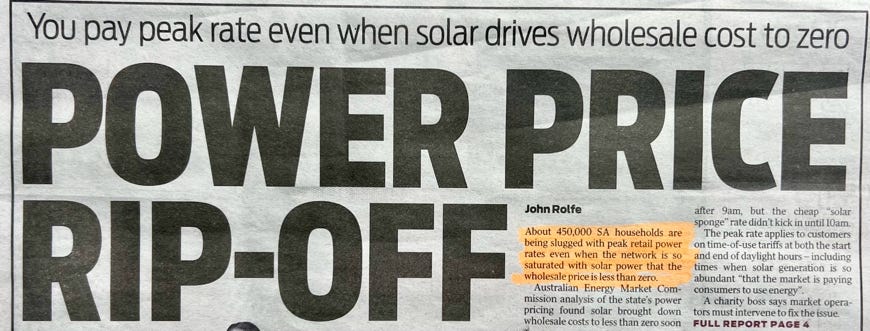
I’ve been in Australia (population: 27 million) for more than a week, doing speaking engagements about the country’s net zero plans. Thus far, I have visited Adelaide, Perth, Brisbane, and Melbourne. (I will be speaking in Melbourne on Monday and Sydney on Wednesday.) Since I arrived, local newspapers have published at least one article per day on the country’s disastrous energy policies, including articles about the soaring cost of electricity, the failing plans to use “green” hydrogen, and looming shortages of natural gas due to the premature shuttering of the country’s coal plants.
Let’s take a closer look at the Delusion Down Under.

Affordability matters. Given that, let’s start with prices. Aussie households have seen their energy costs rise by more than 40% over the past three years alone. The news clip below was published in the Australian Financial Review’s weekend edition. It explains that electricity rates across Australia will continue rising as the country’s electric grid is forced to accommodate more alt-energy.
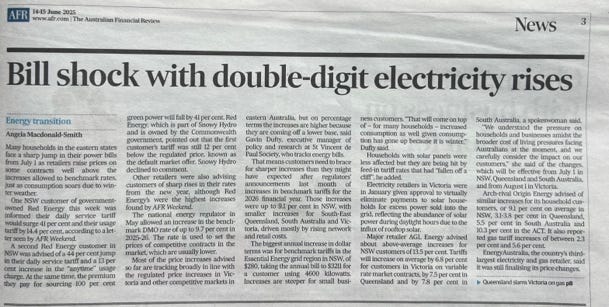
None of this is surprising. Since 2008, wind and solar have gone from zero to about 33% of the electricity produced in the National Energy Market. As seen below, wholesale prices in the NEM have jumped from $48 to $128 per megawatt-hour over that same period. Furthermore, according to data from the Australian Bureau of Statistics, the retail price of electricity in the NEM has more than doubled since 2008.
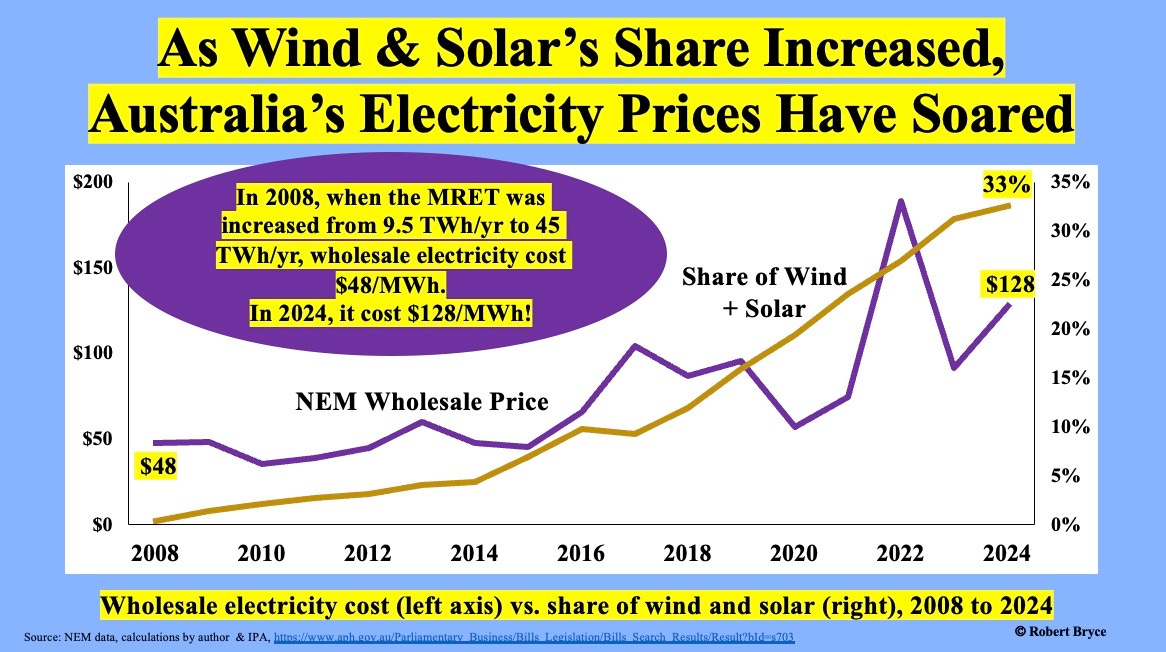
Now, let’s look at Australia’s share of global emissions. Between 2000 and 2023, its share of global CO2 emissions has declined from 1.5% to 1.1% of the global total. Over that same period, the combined emissions from China and India soared from 18% of the global total to 40%. And there’s no doubt that their share of global emissions will continue rising as their economies grow. Thus, Australians can push for net zero all they like, but their contribution to global emissions matters less and less with each passing year.
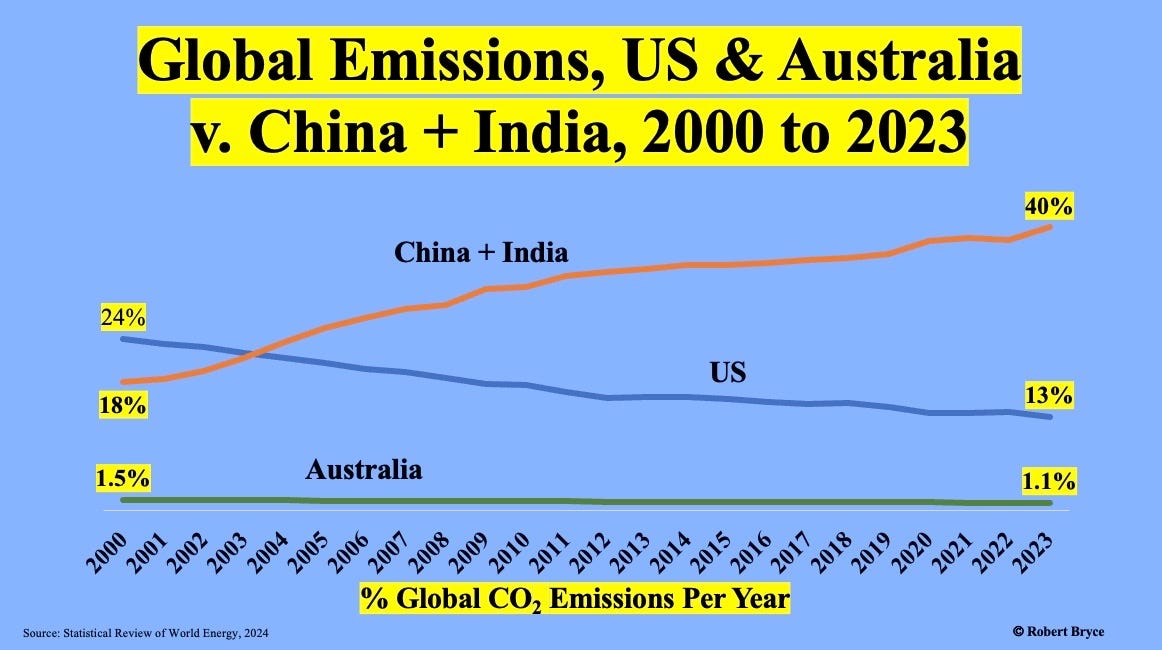
Now, let’s look at coal. Australia is a coal superpower. It has some of the world’s highest-quality coal, the fourth-largest coal reserves, and it is the second-biggest coal exporter. It sends coal to Taiwan, Japan, India, China, South Korea, and other countries.
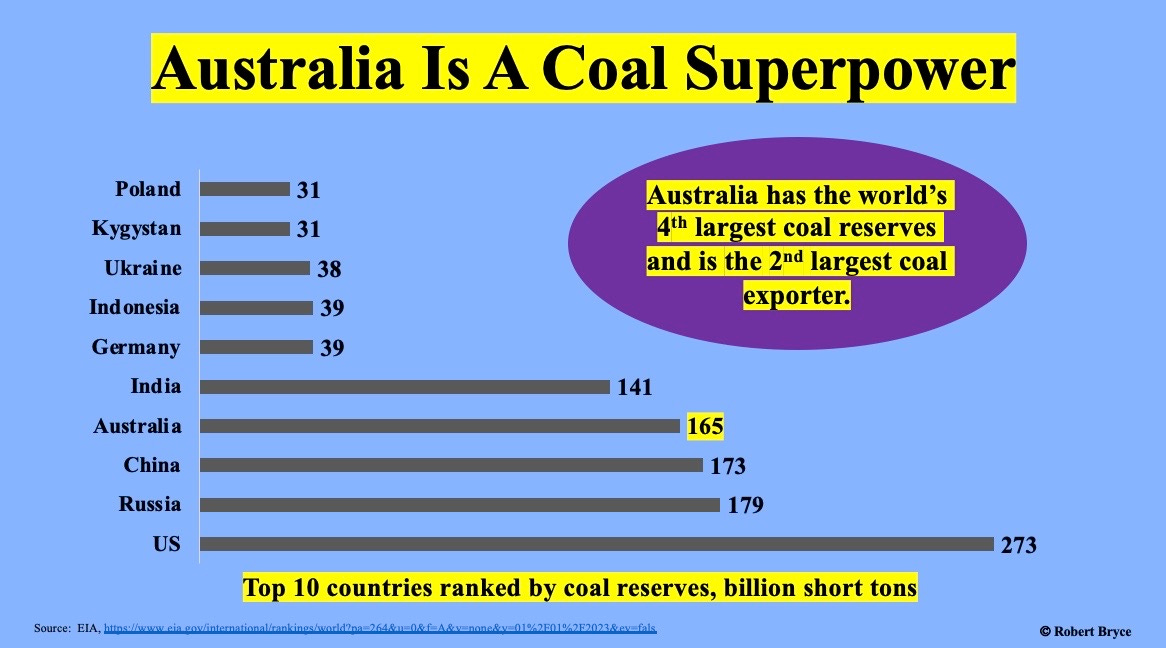
As seen below, China and India burn more coal every week than Australia burns in a year. Despite these facts, Australia is rushing to close its coal-fired power stations. The country expects to close its last coal plant by 2038.
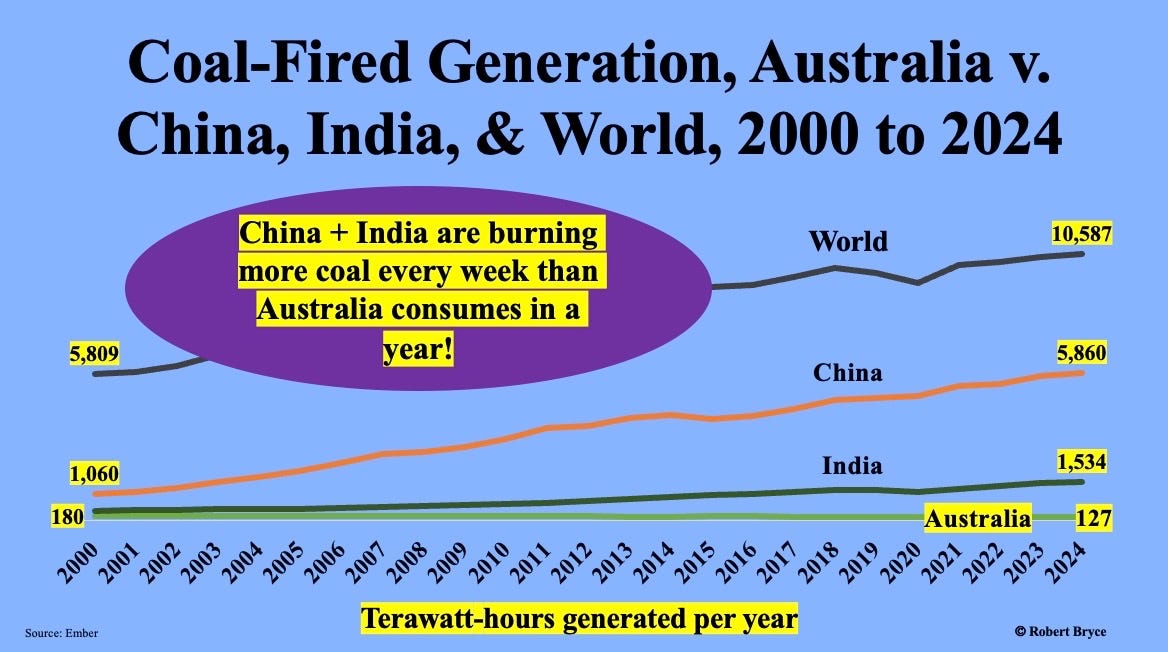
As noted above, Australia exports massive amounts of coal. In fact, it exports about seven times more coal than it consumes domestically.
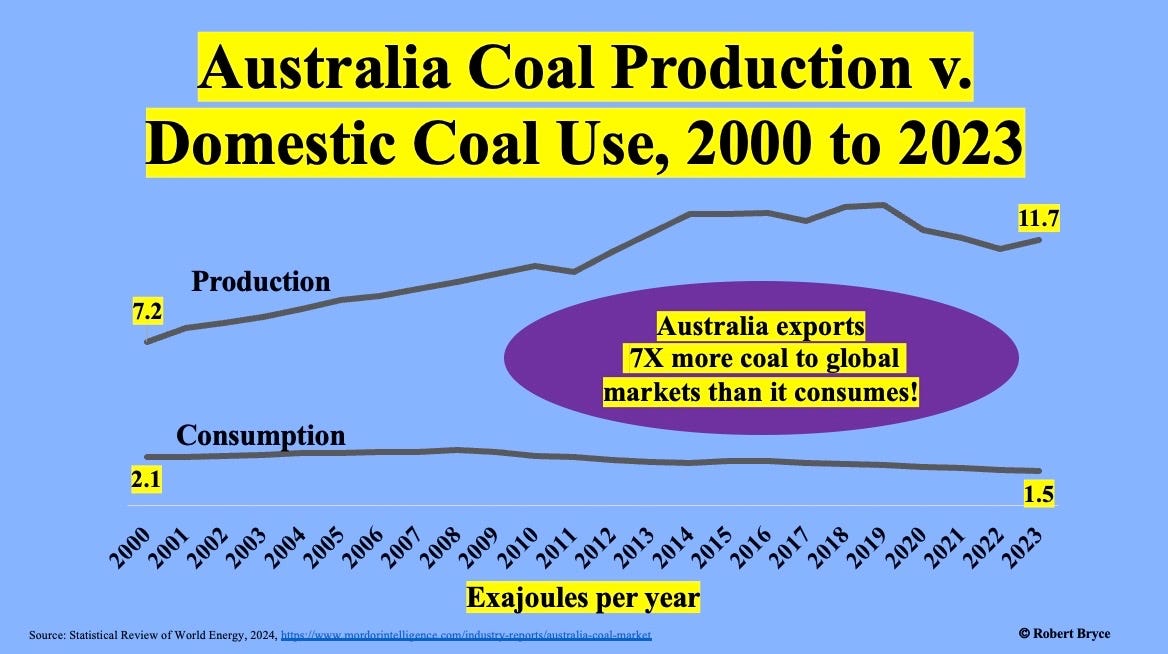
Australia is the world’s third-largest exporter of LNG, and it now exports nearly three times more gas than it consumes. Despite the country’s gas riches, according to the Australian Energy Regulator, wholesale gas prices have tripled over the past decade. Why are prices rising? Some analysts blame LNG exports, but the hard truth is that Australia hasn’t developed sufficient pipeline infrastructure, and despite warnings from regulators about future shortfalls, it isn’t drilling enough gas wells to ensure future supplies.
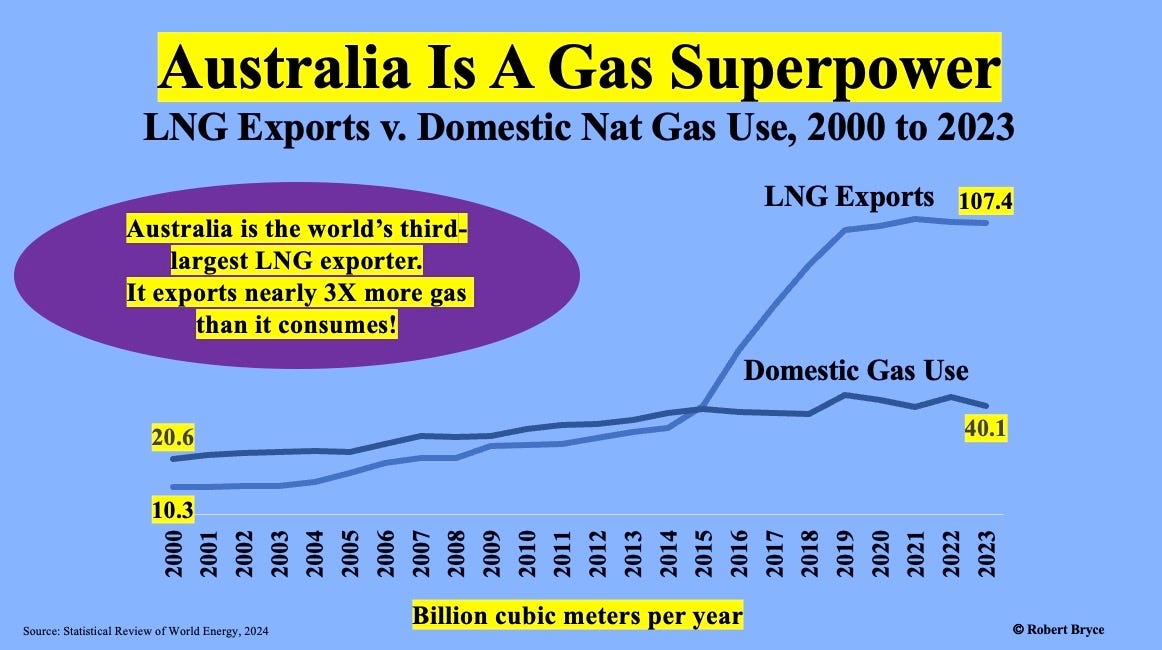
Nuclear power continues to be the most viable option for reducing the world’s reliance on coal-fired generators. Indeed, China is now building more nuclear power plants than any other country. And yet, Australia, which sits atop nearly one-third of the world’s uranium reserves and produces about 8% of the world’s uranium, refuses to build nuclear reactors.
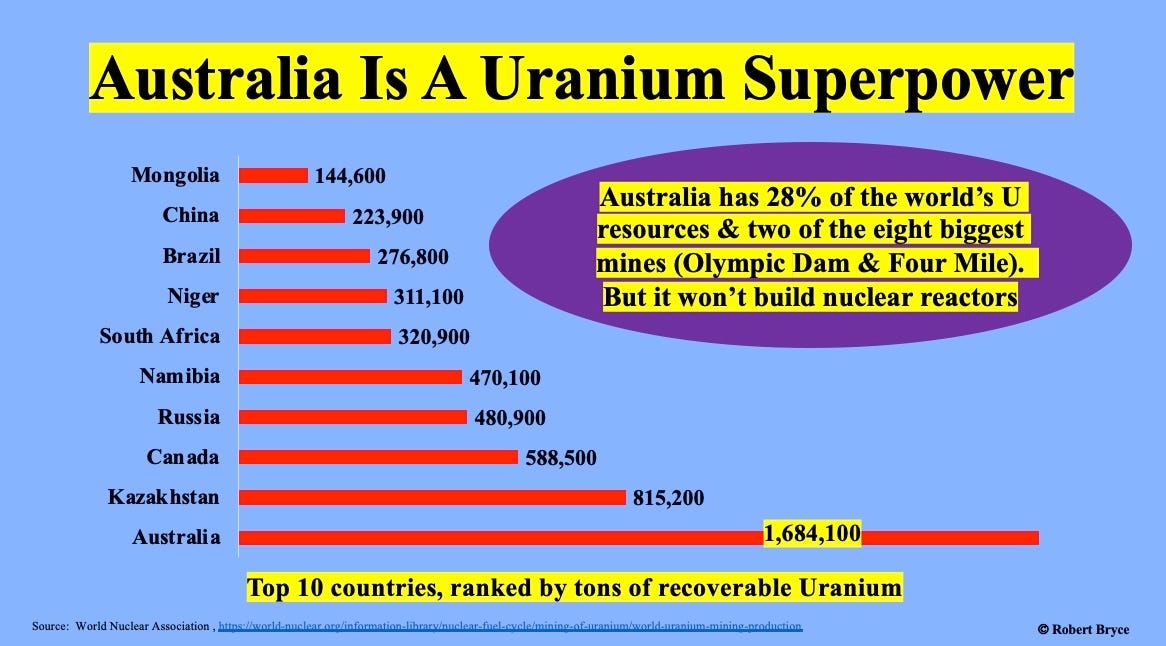
The Albanese government claims that Australia can depend on new alt-energy projects. However, rural residents from Perth to Cairns are fighting back against the encroachment of large solar and wind projects. As seen below, the Institute of Public Affairs has recently created a renewable rejection database that includes the rejections and cases of local objections to transmission, storage, solar, and wind energy that have occurred across Australia over the past few years. (The IPA will do a formal launch of the new database over the next few weeks.)
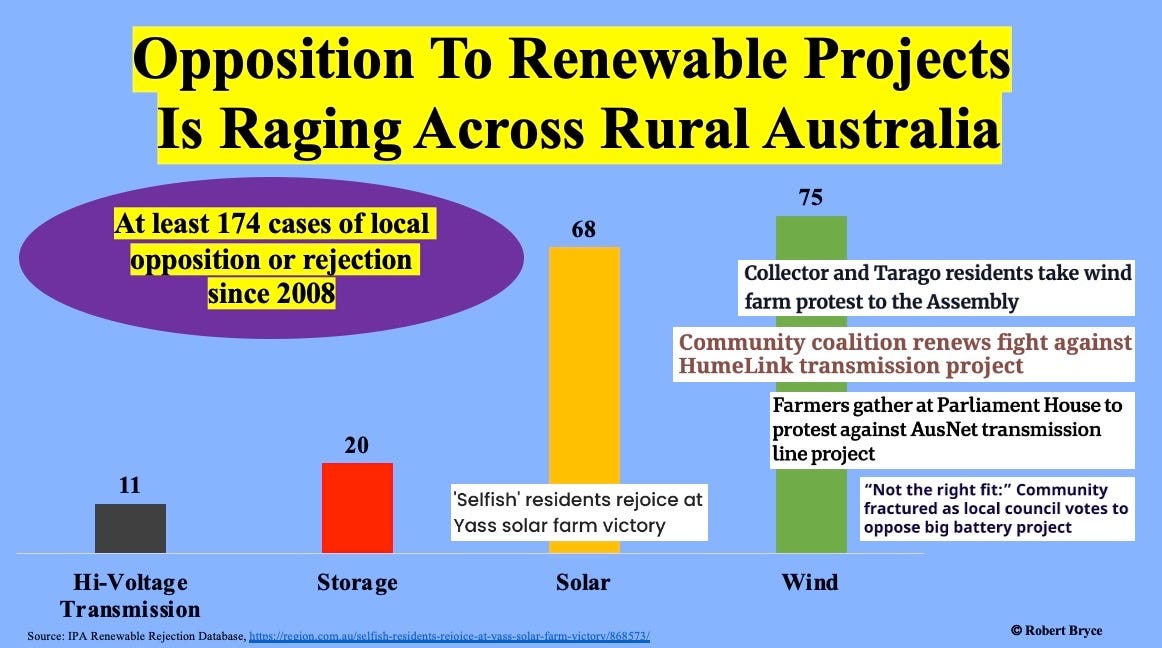
Furthermore, rural Australians are fighting plans by AusNet, Transgrid, and other companies to string high-voltage transmission lines across their farms and ranches. As seen below in the photo below, which was published by my friend, the fearless Aussie writer Joanne Nova, farmers and graziers across Australia are telling the companies to, um, go away. Meanwhile, the Australian Energy Market Operator is mouthing words about “social license,” knowing that rural Aussies are outraged by plans for massive expansions of the high-voltage grid.
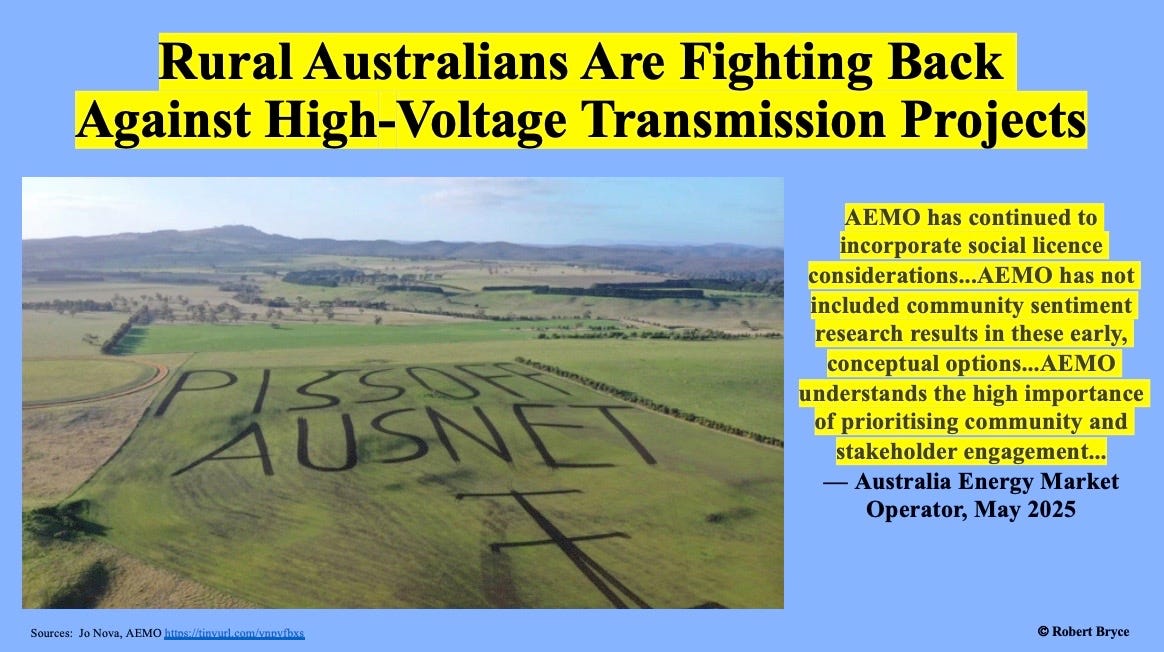
The punchline here is obvious: Australia cannot — will not — achieve net zero by 2050. It’s an impossible task. Nevertheless, it appears the country will waste a lot of money pretending that it can.
I will close with a link to a piece just published by David Turver here on Substack called “Net Zero Is A Far-Left Tyrannical Death Star.” As Turver, a savvy observer of Britain’s energy system notes, net zero around the world is “crumbling.” He points out that New Zealand is backtracking on its net zero claims and that Indonesia and Argentina may soon pull out of the Paris climate deal. Turver might be overstating it a bit — but only a bit — when he says that net zero is a “project of the big-state tyrannical far-left.” And we should pray Turver is correct when he predicts that the “net zero death star will eventually be destroyed by the forces of freedom and market economics.”
As the old saying goes, from his lips to God’s ears.
Is Oil & Gas Right for Your Portfolio?
Energy news and help invest in energy projects. Click here to learn more
Crude Oil, LNG, Jet Fuel price quote
ENB Top News
ENB
Energy Dashboard
ENB Podcast
ENB Substack
The post Deluded Down Under appeared first on Energy News Beat.
“]]
